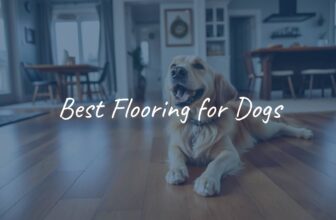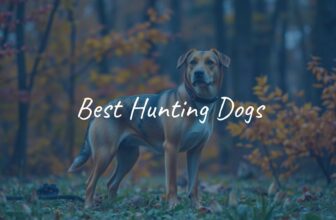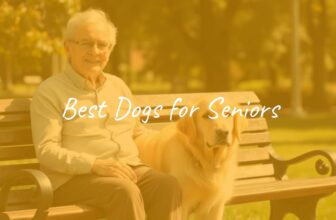
Big dog breeds are often called “gentle giants” for good reason. These large dogs are not just eye-catching because of their size, but also because of their friendly and loving personalities. So, what counts as a “big dog”? And what should future owners keep in mind before adding one of these huge pets to their families? This guide explains what makes a dog “big,” what special care they need, and what it’s really like to live with a large breed so you can decide if one of these dogs is right for you.
What Makes a Dog a Big Breed?
When someone mentions “big dog breeds,” they usually mean dogs that are much bigger than average. These dogs often weigh at least 70 pounds and stand tall with a strong build. Their size doesn’t just stand out-it often matches their big personalities too.

Size and Weight
Most big dog breeds start at about 70 pounds, but many weigh much more. Some giant breeds can weigh up to 230 pounds or even more as adults. Many large breeds are more than two feet tall at the shoulder, and the tallest can reach up to 30 inches or above. Large breeds also tend to mature more slowly than smaller breeds, usually taking 18-24 months to be fully grown-though most of their growth happens in their first year.
Traits of Big Breeds
Besides their size, many big breeds share a few other qualities. Many were originally bred for jobs like pulling, herding, or guarding, so they are often strong and smart. They tend to be calm, loyal, and patient, especially around children. Some are full of energy, while others are more relaxed and love their time at home. Because of their size, these dogs might knock things over by accident, so it’s best to watch them around small children.
Popular Big Dog Breeds and Their Qualities
There is a wide variety of big dog breeds, each with its own look and personality. Here are some of the most common and well-loved large breeds:
| Breed | Weight | Height | Key Qualities |
|---|---|---|---|
| Irish Wolfhound | 105-120 lbs | 30+ inches | Tallest breed; calm, gentle; short life (6-8 years) |
| Great Dane | 110-175 lbs | 28-32 inches | Gentle, quiet; needs space; can be stubborn |
| Bernese Mountain Dog | 70-115 lbs | 23-27.5 inches | Friendly, good for cold climates, heavy shedders |
| Saint Bernard | 120-180 lbs | 26-30 inches | Great with children; loyal; drool and shed a lot |
| English Mastiff | 120-230 lbs | 27.5+ inches | Large and calm; protective; needs early socialization |
| Neapolitan Mastiff | 110-150 lbs | 24-31 inches | Protective; droopy and drooly; not for beginners |
| Newfoundland | 100-150 lbs | 26-28 inches | Gentle, loves water, sheds a lot |
| Scottish Deerhound | 75-110 lbs | 28-32 inches | Easygoing; likes both play and rest; calm |
| Leonberger | 90-170 lbs | 25.5-31.5 inches | Affectionate, loves outdoor activities, short life |
| Anatolian Shepherd | 80-150 lbs | 27-32 inches | Guardian instincts, needs socialization |

Other big breeds include the Black Russian Terrier, Bullmastiff, Dogue de Bordeaux, Cane Corso, Great Pyrenees, Tibetan Mastiff, Bloodhound, Greater Swiss Mountain Dog, Rottweiler, Boerboel, Tosa Inu, Estrela Mountain Dog, Akita, Alaskan Malamute, and Otterhound. Each has its own strengths, quirks, and care needs. Some are independent, some love water, and some are excellent with kids. But all have big hearts to match their size.
Benefits and Difficulties of Big Dogs
Choosing to live with a big dog has its ups and downs. While their size can be intimidating, most big breeds are devoted companions. But their size also means owners must be ready to face some challenges.
Family Life and Personality
Big dogs are often very loyal and friendly, making them great family pets. Many are patient and loving with children, watch over the household, and even enjoy cuddling. Their calm behavior is comforting, and they want to be included in family activities-whether it’s hiking or relaxing at home.
Space and Exercise Needs
Large dogs simply need more space. Small apartments can be too tight, especially for breeds like Great Danes or Mastiffs. Some big dogs are fine with moderate exercise, but others are very active and need lots of movement and play. A bored large dog can make trouble by chewing or digging. Make sure you have enough space and time for their exercise and play needs.
Lifespan
Many large breeds don’t live as long as smaller ones. While small dogs can live 15 years or more, big breeds like the Irish Wolfhound or Leonberger often only reach 6-8 years. This means you have less time with your pet, which is something to be aware of when bringing a big dog home.
Food and Diet
Big dogs eat a lot more food than small ones, and their nutritional needs are different, especially as puppies. They require special food for healthy bones and joints. This makes feeding them more expensive. It’s best to talk with your vet to get meal plans that suit your dog’s breed and age, especially while growing.
Common Health Problems
- Bloat or stomach twisting (GDV)
- Hip and elbow dysplasia
- Certain heart conditions
- Wobbler syndrome
Big breeds grow quickly, which can lead to bone and joint problems if their diet or activity isn’t managed right. Regular vet visits and careful breeding can help lower the risks.

Costs
Owning a big dog is generally more expensive than owning a small one. Besides the higher cost of food, you’ll pay more for bigger beds, crates, toys, and higher doses of medicine or flea treatments. Grooming large or long-haired dogs can also add up. Training is important and might cost more for bigger breeds since they’re harder to handle if untrained. Be sure your budget can cover these needs.
Should You Get a Big Dog?
Getting a big dog isn’t just about picking a friendly giant-it’s about whether your home and daily life can work for a large breed’s needs. Think about these points before bringing one home:
Home Size and Yard
While some big dogs like to snooze indoors, they still need room to move around. Having a big yard or at least an outdoor space is helpful. Make sure your doors, rooms, and car are big enough for your dog to move comfortably. A fenced yard makes exercise and play safer and easier for your dog.
Children, Pets, and Safety
Most big breeds are gentle and do well with children, but their big bodies can accidentally knock little ones over. Always watch young children around any dog. If you have other pets, think about how your chosen breed gets along with them. New puppies need to be introduced slowly and carefully to other pets for a peaceful household.
Daily Life and Commitment
Large dogs need consistent training and time with their people. Grooming, play, and feeding will become part of your daily routine. Match your activity level to your future dog-some large breeds are laid-back, while others need lots of exercise. Big dogs also cost more to care for. Owning a large breed is a real commitment and they become a big part of the family, often needing special attention for their shorter lives.
How to Care for a Big Dog Breed
Caring for a big dog means thinking about their special needs from the start. Here are a few tips:
Training and Socialization
Start training your big dog as early as possible-good behavior is extra important when your dog weighs as much as a person. Puppy classes and positive reinforcement (like treats and praise) work well. Socialize your puppy with other dogs, people, and new situations to help them feel confident and safe. Leash training is especially important for large breeds.
Shedding and Grooming
Many big breeds have thick or long hair and can shed a lot. Regular brushing keeps their coat healthy and your house cleaner. Dogs with wrinkles or folds, such as Neapolitan Mastiffs, need those cleaned often to avoid skin problems. Invest in sturdy grooming tools and set up a good routine early on.
Joint and Mobility Care
Because of their heavier weight, big dogs are more likely to have joint issues such as arthritis or hip dysplasia. Keep your dog at a healthy weight to take pressure off their joints. Special beds, ramps, and gentle exercise can help. Puppies need slow, steady exercise and large-breed puppy food to build strong joints and bones as they grow.
Travel and Transport
Taking a large dog places can be tricky. You’ll need a strong, large crate for car rides or flights, and not every vehicle can fit a giant breed. Think about how you’ll handle trips to the vet or vacations. Not all rentals or hotels accept large pets, so always call ahead.

Common Questions About Big Dog Breeds
Do big dogs need more exercise than small dogs?
Not always. Some big breeds, like Mastiffs, only need a few walks each day and aren’t as active as you might think. Others, such as Alaskan Malamutes or Scottish Deerhounds, need lots of activity to stay happy. Read about the breed you’re interested in and match their exercise needs to your lifestyle.
Are large breeds more difficult to train?
Big breeds aren’t harder to train, but training is more important because of their size and strength. Some are very smart and eager to learn, while others can be stubborn. Early and steady training is needed for safety and good manners.
What health problems do big dogs usually have?
Large breeds are at risk for problems like bloat (stomach twisting), hip or elbow dysplasia, certain heart problems, and shorter average lives. A good diet, regular exercise, responsible breeding, and regular vet care help lower these risks and keep your big dog healthy.






